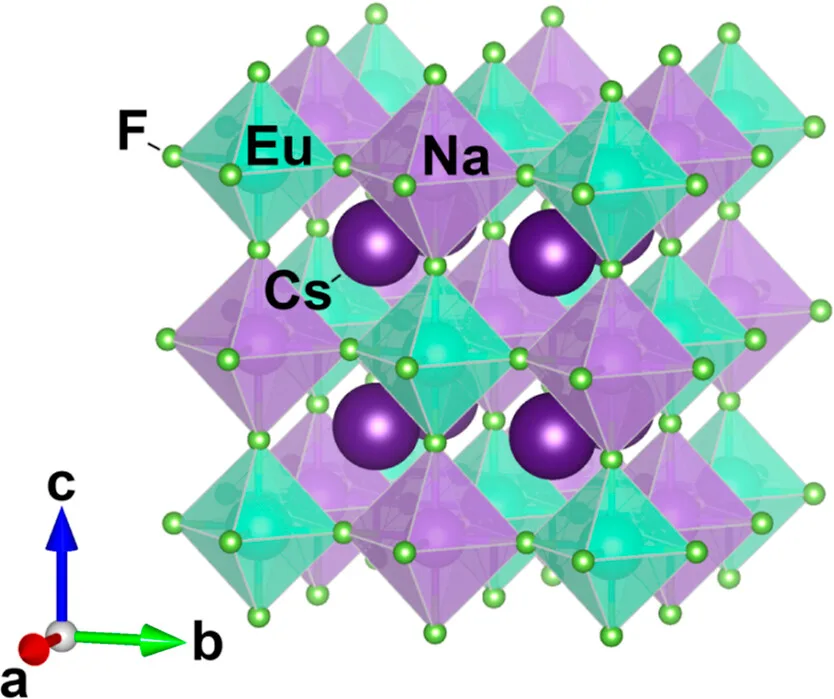University of Illinois Urbana Champaign professor Daniel Shoemaker and graduate student Zachary Riedel have identified potential europium compounds for use in quantum memory, a key component in quantum computing. The team used density functional theory calculations to predict and synthesize a new, air-stable material that could store quantum states of particles without destroying their information. The research, published in the Journal of the American Chemical Society, was supported by the U.S. Department of Energy and the National Science Foundation. Riedel is now a postdoctoral researcher at Los Alamos National Laboratory.
Quantum Memory: The Search for Suitable Materials
In the pursuit of quantum computing and networking, the components required are fundamentally different from those used in current technology. Each of these components has different constraints, and it remains unclear what materials can be used to construct them for the transmission and storage of quantum information.
A recent study published in the Journal of the American Chemical Society by Daniel Shoemaker, a materials science & engineering professor at the University of Illinois Urbana Champaign, and graduate student Zachary Riedel, has shed some light on this issue. They used density functional theory (DFT) calculations to identify potential europium (Eu) compounds that could serve as a new quantum memory platform. They also synthesized one of the predicted compounds, a new, air-stable material that shows promise for use in quantum memory.
The Role of Rare Earth Metals in Quantum Memory
The researchers are trying to find a material that can store quantum information for extended periods. One way to achieve this is to use ions of rare earth metals. Rare earth elements, such as europium, found at the bottom of the periodic table, have shown promise for use in quantum information devices due to their unique atomic structures.
Rare earth ions have many electrons densely clustered close to the atom’s nucleus. The excitation of these electrons, from the resting state, can last for a long time—seconds or even hours, which is an eternity in the world of computing. Such long-lived states are crucial to avoid the loss of quantum information and position rare earth ions as strong candidates for qubits, the fundamental units of quantum information.
The Challenges of Materials Engineering for Quantum Information
In materials engineering, databases usually provide information on what known material should work for a particular application. However, in quantum information, the field is relatively new, and the population of materials is very small, leading researchers into unknown chemical territory.
Shoemaker and Riedel imposed a few rules in their search for possible new materials. They wanted to use the ionic configuration Eu3+ because it operates at the right optical wavelength. The materials should be transparent to be “written” optically. They also wanted a material made of other elements that have only one stable isotope to avoid scrambling the information being stored. Lastly, they wanted a large separation between individual europium ions to limit unintended interactions.
The Discovery of a New Quantum Memory Candidate
With these rules in place, Riedel composed a DFT computational screening to predict which materials could form. Following this screening, Riedel identified new Eu compound candidates and was able to synthesize the top suggestion from the list, the double perovskite halide Cs2NaEuF6. This new compound is air stable, which means it can be integrated with other components, a critical property in scalable quantum computing. DFT calculations also predicted several other possible compounds that have yet to be synthesized.
The researchers have demonstrated that there are many unknown materials left to be made that are good candidates for quantum information storage. They have also shown that they can efficiently make these materials and predict which ones will be stable.
The Researchers and Their Affiliations
Daniel Shoemaker is also an affiliate of the Materials Research Laboratory (MRL) and the Illinois Quantum Information Science and Technology Center (IQUIST) at UIUC. Zachary Riedel is currently a postdoctoral researcher at Los Alamos National Laboratory. This research was supported by the U.S. Department of Energy, Office of Science, National Quantum Information Science Research Center Q-NEXT. The National Science Foundation through the University of Illinois Materials Research Science and Engineering Center supported the use of facilities and instrumentation.
External Link: Click Here For More

